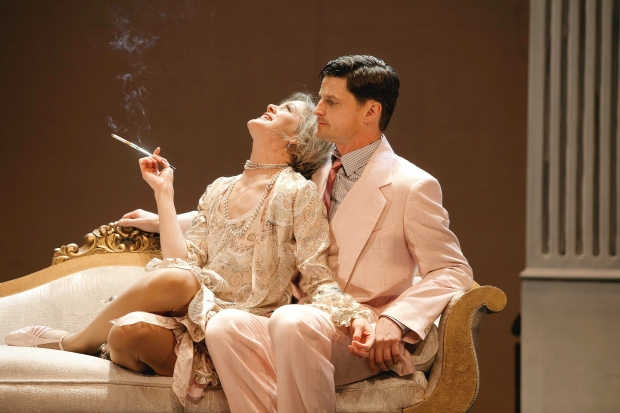
Credit: Trudie Lee
At Max Bell Theatre (Calgary) until November 10, 2013
403-294-7447/theatrecalgary.com
Posted October 21, 2013
Almost half the cast list of The Great Gatsby reads as if director Kim Collier had cherry-picked her way through Vancouver’s finest: Bob Frazer, Jonathon Young, Craig Erickson, Celine Stubel, Jennifer Lines and Haig Sutherland. But 2010 Siminovitch Prize-winning Collier isn’t directing this show in Vancouver for a local company; she’s directing for Theatre Calgary. Given this outstanding director and the stellar cast I just had to be there so I did the unprecedented: I flew to Calgary for the opening.
Not all great novels are successfully adapted for stage but Simon Levy has retained F. Scott Fitzgerald’s evocative, poetic language as well as capturing the glamour and desperation of the Roaring Twenties. WWI was over, the stock market was booming, the 18th Amendment ushered in prohibition that, not surprisingly, generated bootleg booze and gangsters. Flappers. The Charleston. Speakeasies. The rich were getting richer, the poor were getting babies but still the song went, “Not much money/Oh but honey/Ain’t we got fun”.
Levy did not provide a score for his adaptation so Collier dug in and did her research. With all those lavish, laughter-filled parties that Jay Gatsby threw in his glittering West Egg estate how could there not be music. Composer/arranger Andrew Creeggan brings the period alive with songs like “If You Knew Suzie”, “If You Were The Only Girl In The World”, and “I Wonder What’s Become Of Sally” played onstage with a piano, trumpet and trombone. Choreographer Anita Miotti has done her research, too, and the party scenes are some of the production highlights with costume designer Judith Bowden’s silvery, sparkly flapper gowns rippling with fringe as frenzied dancers do the Charleston and the Black Bottom.
Bowden doubles as the set designer and the predominant colour is blue: blue reflected on glassy panels with clouds drifting or stars twinkling. A wide, brass staircase curves up stage right to a balcony from which vantage point a detached Gatsby can watch his partying guests below.
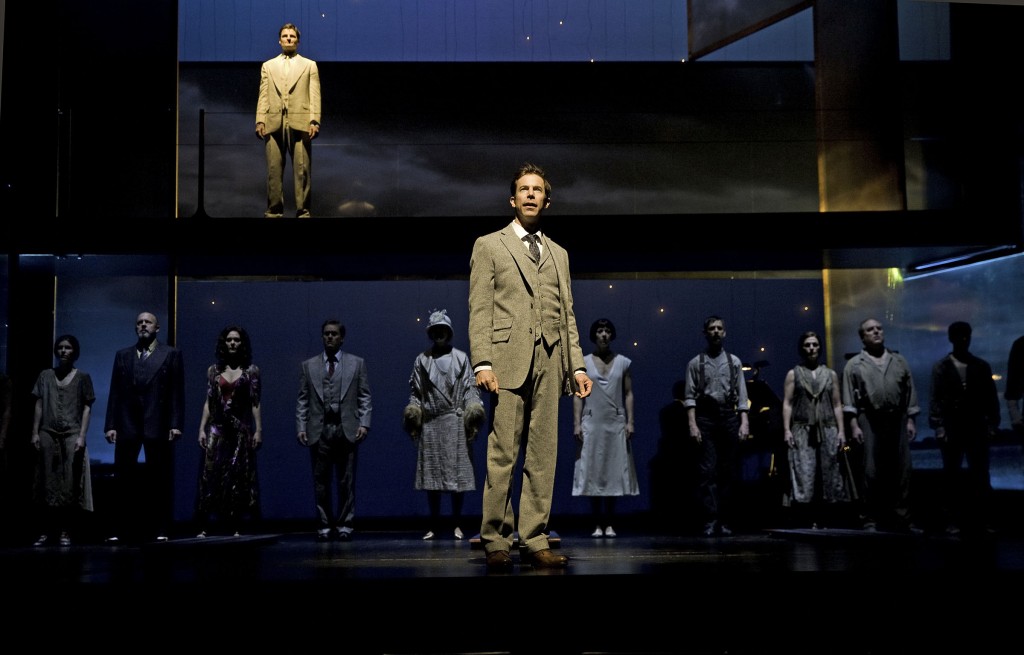
Credit: Trudie Lee
The Max Bell Theatre is a proscenium theatre with seating for 750 – not an ideal space for such an intimate story. But the play is both intimate and epic in scale: the story of Gatsby’s obsession with Daisy is intimate but it’s also Fitzgerald’s commentary on The American Dream – a dream that would fall disastrously apart by the end of the decade. Collier counted on lighting designer Alan Brodie to make The Great Gatsby resonate on both levels and and he brings it all together magnificently.
In the play and in the novel Nick Carraway, fresh from the war, moves East to make his fortune and ends up in West Egg (inspired by Long Island where Fitzgerald lived for a while with his wife Zelda). Across the bay lives beautiful Daisy Buchanan, a distant cousin of Nick’s, with her wealthy husband Tom, who has had a string of affairs over the years and is now involved with married woman Myrtle Wilson. Next door to Nick’s cottage is a mansion with expansive grounds belonging to mysterious Jay Gatsby; no one knows how he made his fortune and rumours are rife. But he throws lavish parties that last into the wee small hours; liquor flows freely, there’s music and lights so who cares who or what he is.
Nick becomes the go-between for Gatsby who, we learn, was in love with Daisy years ago when he was poor. But, “Her voice is full of money”, says one of the characters about Daisy who cannot imagine being anything but rich.
One Calgary critic complains that in this production, the reunion between Gatsby and Daisy feels more like a hostage taking than the rekindling of a love affair. I think that’s the point: Gatsby (Bob Frazer) is not in love with Daisy, he’s in love with the idea of Daisy. He has never let go of the past and has, over the five years during which he has not even seen Daisy, put her on a pedestal. Now he wants to regain what never was his in the first place. Daisy (Amy Rutherford) has been too busy partying, dining out and buying expensive things for herself even to think of Gatsby; she barely considers the child she and Tom have.
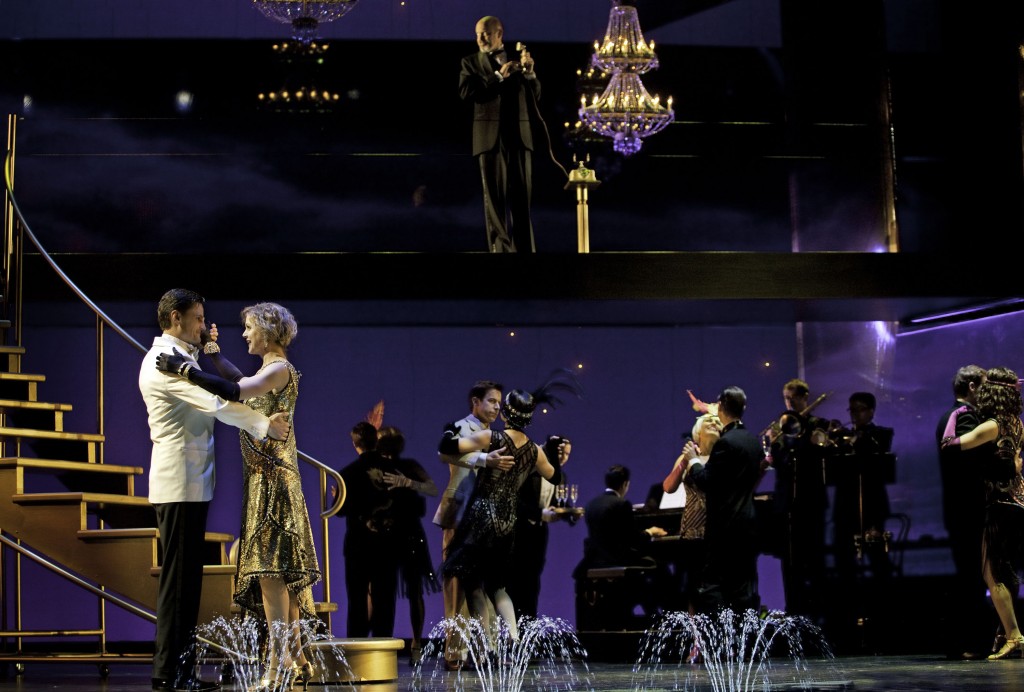
Credit: Trudie Lee
Frazer, handsome in evening dress, brings all this pathetic – almost heroic – obsessiveness to the role. Almost childlike, Gatsby is convinced that Daisy has never loved her husband Tom (Craig Erickson) and is determined to get her to confess it. Erickson, one of the most gentlemanly young men around, does an against-type job of being loud-mouthed, loutish Tom while Rutherford’s Daisy is a fluttery, Blanche Dubois-ish portrayal that starts at high-strung and accelerates from there. Jamie Konchak is Daisy’s pert and self-confident pro-golfer friend Jordan Baker; Konchak moves with the assurance of an athlete and is a solid counterpoint to Daisy’s jittery neuroticism.
Jennifer Lines double in two minor roles – a change for one who frequently – and sparklingly – dominates the Bard on the Beach stage. Haig Sutherland also doubles in two minor roles.
Almost stealing the show is Celine Stubel as Myrtle, a woman from the other side of the tracks whom Daisy’s husband is drinking with, sleeping with and buying expensive presents for. Stubel is loose, sloppy, loud – a floozy, in the parlance of the day. Tom is the only bright spot in a life married to poor, hard-working garage mechanic George (Julien Arnold).
Gatsby, surprisingly, is not the main character in The Great Gatsby. Fitzgerald is really writing about Nick and his discovery that there are “careless” people in the world who bring grief to those around them. Scratch the surface of affluence and glamour and there is nothing. As Nick says, “They were careless people, Tom and Daisy – they smashed up things and creatures and then retreated back into their money or their vast carelessness, or whatever it was that kept them together, and let other people clean up the mess they had made.” Jonathon Young, as Nick, delivers these lines and directs them to the audience in a way that’s inclusive; ‘they’ become ‘us’ in a blinding moment of awareness.
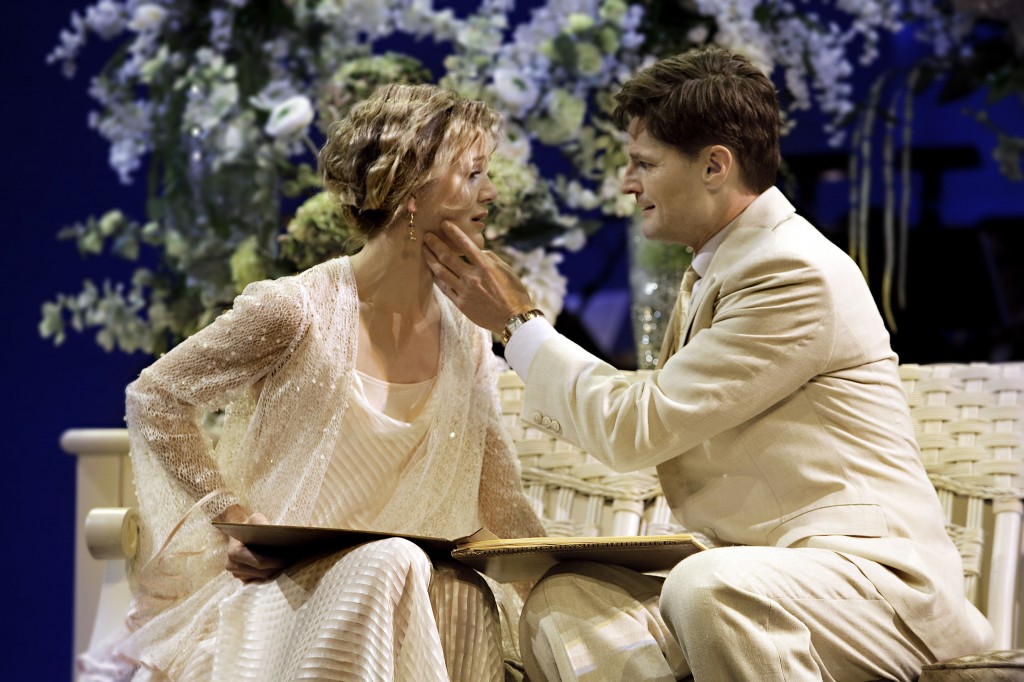
Credit: Trudie Lee
When the music fades away and the lights go down, it’s as sad a commentary on America in the 20s as F. Scott Fitzgerald intended. The curtain falls on a note of false hope: “Tomorrow we will run faster, stretch out our arms further. . . And one fine morning . . .So we beat on, boats against the current, borne back ceaseless into the past.” The ellipses are Fitzgerald’s and they speak volumes: uncertainty, disappointment, pessimism – all wrapped up in dazzle and glitz.
This Theatre Calgary production is wonderful in every respect: sight, sound, emotional impact. With luck, perhaps Arts Club Theatre’s artistic managing director Bill Millerd will pick it up for The Stanley stage.
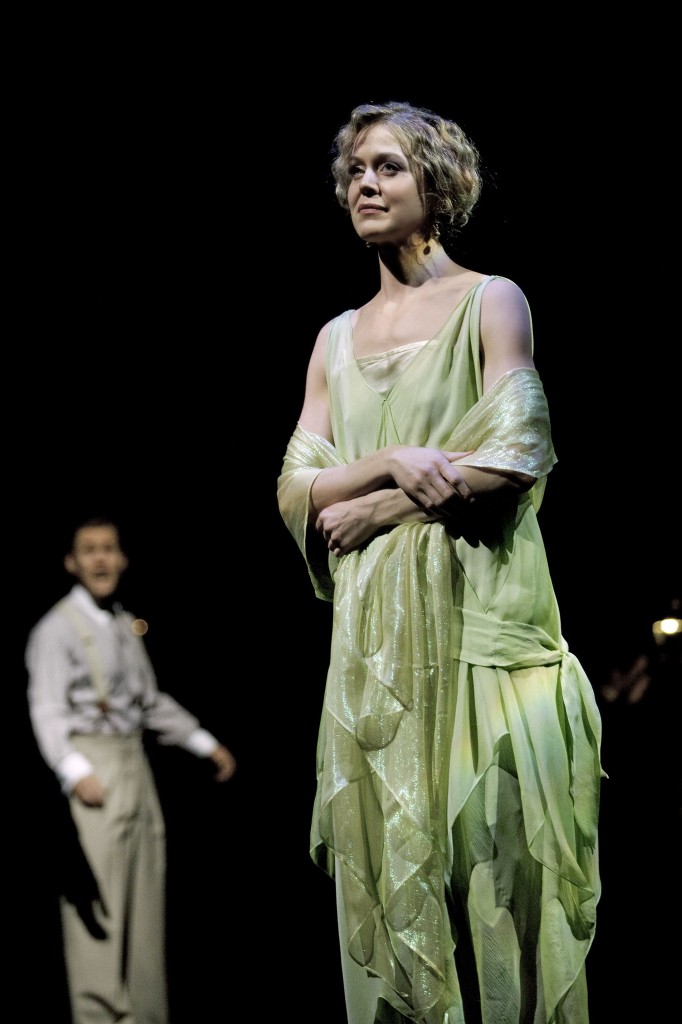
Credit: Trudie Lee
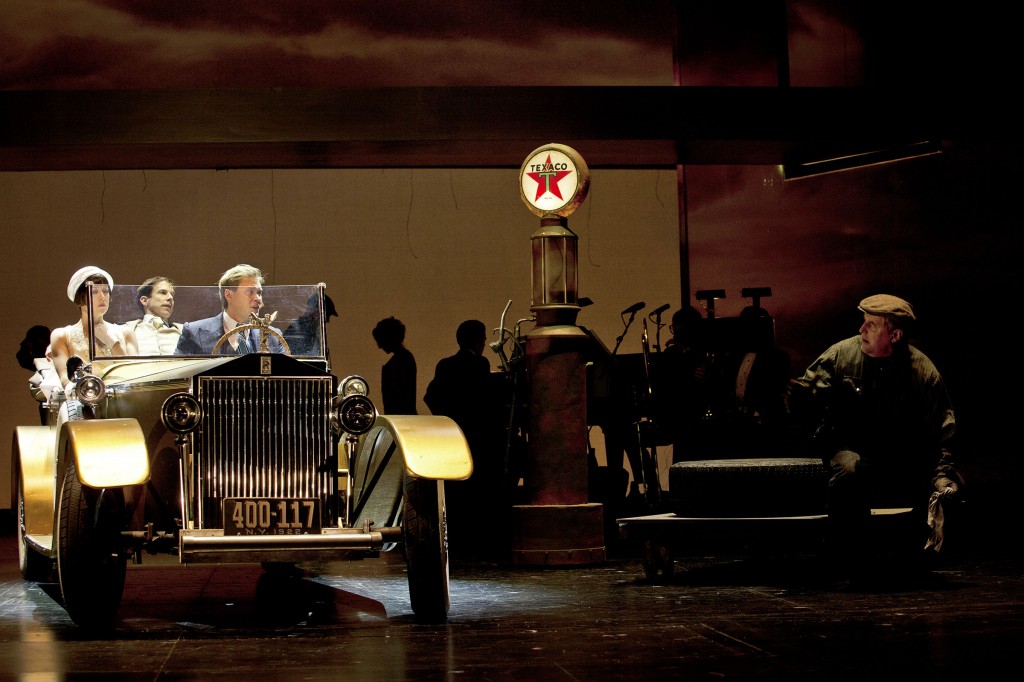
Credit: Trudie Lee

